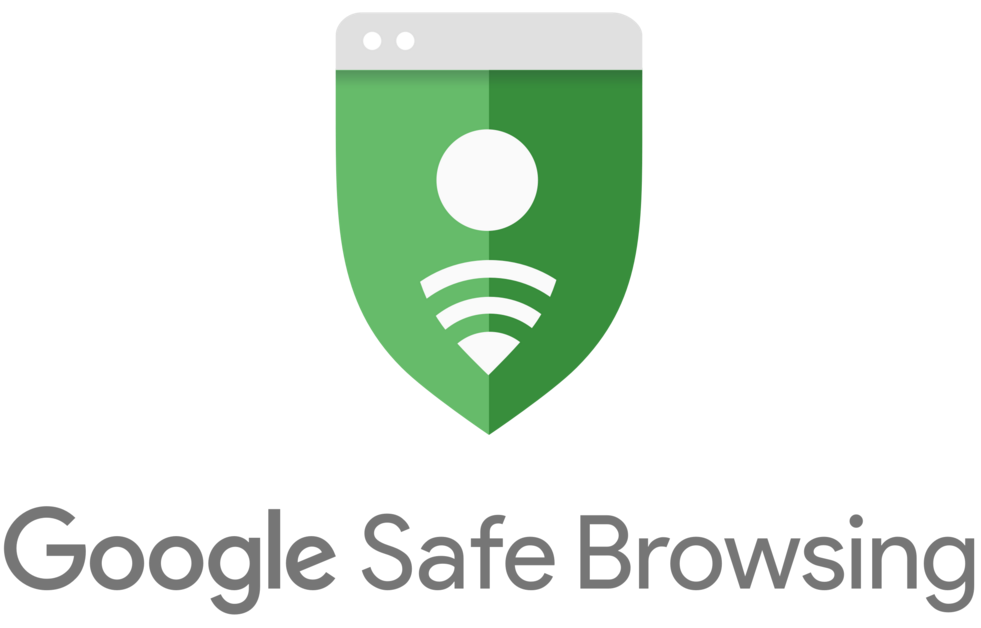Essential Open Enrollment Checklist: Secure the Right Coverage for Your Family

Anúncios
Understanding Open Enrollment Basics
Open enrollment is your golden opportunity to review and adjust your job-based health, dental, and vision coverage.
This period is designed for you to make important changes to your coverage, ensuring it better suits the evolving needs of you and your family.
Anúncios
Let’s dive into the key aspects you need to be aware of during this critical period.
Adjust Your Coverage
The open enrollment period is your chance to make adjustments to your current coverage.
Anúncios
This could mean adding new benefits, changing your plan, or adjusting the level of coverage you have.
Perhaps your family has grown, or you’ve developed new health considerations – whatever the case, this is the time to tailor your coverage to fit your life.
 Stay covered no matter the situation
Stay covered no matter the situation
Why Timing Matters
Timing during the open enrollment period is absolutely crucial.
Every employer has specific deadlines for the open enrollment period, and missing these deadlines can have significant consequences.
If you fail to enroll or make necessary changes within this window, you might have to wait until the next open enrollment period or experience a qualifying life event to make adjustments.
Therefore, mark your calendar and set reminders to ensure you don’t miss out on this opportunity.
Gather the Necessary Information
Before making any decisions, take the time to gather all the necessary information about your current plan and any new options available to you.
- 👨 Review the summary plan descriptions and benefits coverage specifics for each plan option.
- 👨 Check the provider networks to confirm that your preferred healthcare providers are included.
- 👨 Evaluate how well each plan covers any specific health conditions or specialized care needs you and your family might have.
Having this information at your fingertips will allow you to make informed choices that best support your family’s health needs.
Take Advantage of Preventive Services
One of the significant benefits of job-based health plans is access to preventive services at no additional cost.
Under the Affordable Care Act, most plans must cover a variety of preventive services, such as annual check-ups, immunizations, and screenings for conditions like high blood pressure, diabetes, and cancer.
These services are vital for early detection and maintaining long-term health.
Comprehensive Coverage
Job-based health plans typically offer comprehensive coverage that includes emergency care, maternity and newborn care, as well as mental health and substance use disorder benefits.
During open enrollment, make sure to understand what benefits each plan offers, and ensure it includes coverage for any essential health needs your family may have.
Financial Protection
Another critical aspect of open enrollment is evaluating the financial protection your plan offers.
Health coverage can shield you from high medical expenses that might arise from medical emergencies.
Understand what services are covered, the associated costs such as co-pays and deductibles, and the process for getting benefit claims paid.
This financial insight can prevent burdensome debt from unexpected medical situations.
By understanding these basics, you can make the most out of the open enrollment period.
Be proactive, review your options thoroughly, and make timely decisions to secure the best possible coverage for your family.
As you complete your preparations, keep in mind that this is just the beginning.
There are more aspects to explore to ensure your health coverage fits your needs comprehensively.
Evaluating Your Coverage Options
Choosing the right health coverage during the open enrollment period is crucial.
This chapter will guide you through the meticulous process of evaluating your available options by reviewing plan details, ensuring your providers are within network, and assessing specific coverage needs.
Let’s dive in!
 You have many options
You have many options
Review Summary Plan Descriptions
The first step in evaluating your coverage options involves carefully reviewing the Summary Plan Description (SPD) and the Summary of Benefits and Coverage (SBC) documents for each plan offered by your employer.
These documents lay out the essential details of each plan, including covered services, exclusions, and the process for filing claims.
- 👩 Summary Plan Description (SPD): The SPD provides a comprehensive overview of what the plan covers, how it operates, and your rights and responsibilities. Pay close attention to the types of services covered, any limitations, and additional benefits.
- 👩 Summary of Benefits and Coverage (SBC): The SBC offers a more concise snapshot of the plan’s coverage, including critical points like out-of-pocket costs, deductible amounts, and coverage percentages for various services.
Taking the time to thoroughly read these documents ensures that you understand the full scope of what each plan offers and can make informed decisions for you and your family.
Examine Provider Networks
Your health plan’s provider network significantly impacts the care you receive and the costs involved.
Verifying that your preferred healthcare providers and facilities are in-network is a crucial step.
- 🧒 Network Providers: Ensure your primary care physician, specialists, and any frequently visited facilities are within the network. Using in-network providers generally means lower out-of-pocket expenses, as these providers have pre-negotiated rates with the insurance company.
- 🧒 Out-of-Network Providers: Consider the expenses and coverage variations if you regularly visit out-of-network providers. While some plans offer partial coverage for out-of-network services, the costs are typically higher.
Checking the network status of your healthcare providers not only helps you avoid unexpected bills but also ensures continuity of care.
Assess Coverage for Specific Health Conditions
Everyone’s health needs are unique, and it’s essential to choose a plan that accommodates your specific health conditions and specialized care requirements.
- 👨 Chronic Conditions: If you or a family member has a chronic condition like diabetes, asthma, or heart disease, review how each plan handles ongoing treatment. Look into coverage for medications, necessary equipment, and frequent doctor visits.
- 👨 Specialized Care: Some conditions require specialized treatments or frequent visits to specialists. For example, if you need mental health services, ensure the plan provides adequate coverage for therapy sessions, psychiatric visits, and any medications.
- 👨 Preventive Services: Confirm that the plan covers preventive services such as immunizations, cancer screenings, and annual wellness exams, often provided at no additional cost.
By assessing a plan’s ability to cover these specific health needs, you’ll ensure comprehensive care without incurring excessive costs.
Regardless of the plan you choose, becoming familiar with the intricate details and unique features will empower you to make the best choice for your family.
Remember, well-considered decisions during open enrollment lead to greater health security and financial peace of mind.
Finally, don’t underestimate the importance of timing. Your open enrollment period is limited, so act swiftly and thoroughly.
Missing the opportunity to switch or update your coverage can have lasting implications.
Having a clear understanding of your coverage options prepares you to tackle the next essential consideration—understanding the financial implications of each choice.
Taking the time to evaluate costs and benefits will further refine your decision-making process and secure the most cost-effective, comprehensive health care for you and your family.
Understanding Financial Considerations
Ensuring you make the right choices during open enrollment requires a solid understanding of financial considerations associated with your health coverage options.
Here’s a detailed breakdown of what to focus on:
Comparing Health Plans Costs
When assessing various health plans, it’s essential to carefully compare the costs associated with each option. This includes premiums, deductibles, copayments, and coinsurance.
- Premiums: These are the fixed monthly amounts you pay to keep your coverage active. Comparing premiums will give you an upfront idea of how much you will be spending every month, regardless of whether you use health services.
- Deductibles: This is the amount you must pay for covered health care services before your insurance starts to pay. Some plans come with high deductibles but lower premiums, while others have lower deductibles but higher monthly costs.
- Copayments and Coinsurance: This is the share of the cost you pay after you’ve paid your deductible. Copayments are usually flat fees (e.g., $20 per doctor’s visit), while coinsurance is a percentage of the service cost (e.g., you pay 20%, and your insurance covers 80%).
Considering Out-of-Pocket Limits
Another crucial aspect is understanding the out-of-pocket limits for each plan.
The out-of-pocket maximum is the most you have to pay during a policy period (usually a year) for covered health services.
After you spend this amount on deductibles, copayments, and coinsurance, your health plan pays 100% of the costs of covered benefits:
- 🧒 Importance of Limits: These limits protect against high medical costs. If you anticipate needing extensive medical care, a plan with a lower out-of-pocket maximum could be more suitable despite higher premiums.
- 🧒 Tracking Expenses: Review the plan summaries to see if your expenses will quickly meet the out-of-pocket limit, ensuring you don’t overlook potential yearly health care spending.
Total Potential Expenses
While premiums and out-of-pocket limits are significant, you should also consider the total potential expenses:
- 👩 Regular and Catastrophic Costs: Think about both regular healthcare expenses (routine visits, prescriptions, etc.) and catastrophic costs (major medical events). A plan with lower regular costs might be more cost-effective for everyday care, while another with better catastrophic coverage could safeguard against unexpected events.
- 👩 Annual Calculation: Sum up possible total costs, including premiums, expected medical needs, and worst-case scenarios. This helps in making a comprehensive comparison of all plans.
Balancing Premium Costs and Coverage Benefits
Evaluating the balance between premium costs and coverage benefits is a strategic measure.
Sometimes a plan with a higher premium may be more cost-effective if it offers significant additional benefits or has lower other costs:
- 🧒 Preventive Services: Many plans offer free preventive services like annual check-ups and immunizations. Make sure the plan covers what you need most.
- 🧒 Emergency and Specialized Care: If you or your family members might need specialized care (e.g., chronic condition management), expenses in this category should be heavily weighted in your decision-making.
- 🧒 Mental Health and Substance Use: Verify that there is parity in benefits covering mental health and substance use disorders alongside medical services.
Staying financially protected and getting the most out of your job-based health plan requires understanding these economic factors carefully.
Make sure you reach out to your plan administrators for detailed information regarding each factor mentioned.
Transitioning into the next chapter, keep these financial considerations in mind as you further explore getting the best coverage for you and your family.
Essential Benefits to Consider
When it comes to health coverage, paying close attention to the essential benefits provided by your job-based plan can make a significant difference in the overall well-being of you and your family.
During the open enrollment period, evaluating these benefits is crucial to make an informed choice.
This chapter will cover the key aspects: free preventive services, comprehensive health coverage, and mental health and substance use disorder benefits.
Free Preventive Services
Preventive services form the cornerstone of maintaining long-term health, and many job-based health plans offer them at no additional cost.
Thanks to the Affordable Care Act, most job-based plans must cover preventive services like annual check-ups, immunizations, and health screenings for conditions such as high blood pressure, diabetes, and cancer without requiring a copayment or cost-sharing.
These services are vital as they help in early detection and can lead to better health outcomes.
By leveraging free preventive services, you can stay proactive about your health and potentially avoid more severe health issues down the line.
This benefit is especially beneficial for families, providing peace of mind that regular check-ups and essential immunizations will not strain your budget.
Comprehensive Coverage Including Emergency Care, Maternity Care, and Mental Health Services
Job-based health plans typically offer a wide range of benefits beyond preventive services.
Comprehensive coverage is designed to address essential health needs, ensuring you receive the care required in various situations.
| Healthcare Coverage Factor | Description | Importance |
|---|---|---|
| 👩Emergency Care | Emergency care coverage is non-negotiable in any health plan. Ensure that emergency services are included to protect you in case of unexpected medical emergencies. | Essential for immediate and unexpected medical situations. Always check the coverage details to ensure full protection. |
| 👩Maternity and Newborn Care | Maternity care typically includes prenatal and postnatal services to ensure a healthy pregnancy and childbirth. Should be prioritized if family planning or expecting a child. | Crucial for the health of both mother and baby, providing essential services during pregnancy and after childbirth. |
| 👩Mental Health and Substance Use Disorder Benefits | Mental health and substance use disorder treatments should be covered equally as physical health services. Ensure that your plan offers parity for these services. | Ensures equal access to mental health and substance use disorder treatments, which are critical for overall well-being and recovery. |
By understanding and utilizing these comprehensive benefits, you can ensure your plan covers critical health needs, providing robust support across different stages of life and health conditions.
Mental Health and Substance Use Disorder Benefits Parity
Parity in mental health and substance use disorder benefits means that the terms of coverage for these services are on par with those of other medical and surgical benefits.
Under the Mental Health Parity and Addiction Equity Act, job-based health plans are required to provide equal terms of coverage.
This includes aspects like limitations on the number of visits, out-of-pocket costs, and preauthorization requirements.
Utilize Open Enrollment to Ensure Parity: Take this opportunity to learn about your rights and protections regarding mental health and substance use disorder benefits. Reliable information is available in publications like “Understanding Your Mental Health and Substance Use Disorder Benefits” from EBSA. Evaluating the provider network and coverage specifics can ensure you have access to the necessary care without undue financial or administrative barriers.
Maximizing Your Health Benefits
The open enrollment period is your chance to ensure that your health coverage aligns with your family’s unique needs.
By focusing on the essential benefits provided, including preventive services, comprehensive coverage, and mental health parity, you can safeguard your health and finances effectively.
Don’t hesitate to seek additional guidance and support if needed.
The Employee Benefits Security Administration (EBSA) is a valuable resource for detailed information and assistance.
Contact them at 1-866-444-3272 or visit EBSA for further guidance.
Taking these steps during open enrollment can lead to informed decisions, maximizing the benefits from your job-based health plan and providing peace of mind throughout the year.
Getting Help and Support
Navigating open enrollment can be overwhelming, but you don’t have to go at it alone.
Various resources are available to help you make informed decisions about your health, dental, and vision coverage.
This chapter focuses on where to get help and support during open enrollment.
Contact Employee Benefits Security Administration (1-866-444-3272)
If you find yourself with questions or need personalized assistance, the Employee Benefits Security Administration (EBSA) is an excellent resource.
You can reach out by calling 1-866-444-3272. They are equipped to help with a wide array of inquiries related to your job-based health benefits.
Whether you need clarification on coverage details or guidance on handling specific issues, EBSA is a reliable point of contact.
Request Detailed Information from Plan Administrators
It’s essential to thoroughly understand the specifics of your health plan options, and who better to help than your plan administrator?
Here are some types of information you can request:
- 🧒 Summary Plan Descriptions: These documents provide an overview of the key features and rules of your health plan.
- 🧒 Summary of Benefits and Coverage: This summary helps you compare different plans side-by-side, detailing what is and isn’t covered.
- 🧒 Provider Network Information: Ensure the providers you prefer and trust are included in the plan’s network.
- 🧒 Financial Obligations: Learn about deductibles, copayments, coinsurance, and out-of-pocket limits. This helps you evaluate the true cost of each plan.
- 🧒 Employee Contribution/Premium: Understand how much you need to pay directly from your paycheck for each plan.
Requesting these documents allows you to make educated comparisons and helps you choose a plan that genuinely meets your family’s needs.
Utilize Online Resources at askebsa.dol.gov
Online tools and resources can offer additional support and guidance during open enrollment. The website askebsa.dol.gov is designed to provide easy access to a wide variety of information related to employee benefits.
You can find:
- 👨 Publications: Download documents like “Understanding Your Mental Health and Substance Use Disorder Benefits” to get detailed insights into your coverage protections.
- 👨 FAQs: Browse frequently asked questions for quick answers to common concerns.
- 👨 Email Support: Reach out to EBSA representatives directly for assistance via email.
- 👨 Webinars and Online Workshops: Take advantage of educational opportunities to deepen your understanding of your benefits.
These resources collectively ensure you’re not left in the dark and help you take full advantage of what your job-based health plans have to offer.
By harnessing these support tools, you can confidently navigate the open enrollment period.
As you move forward, remember that a well-chosen health plan is a crucial part of safeguarding your family’s health and financial stability.
With the right resources, you can make informed decisions that cater to your unique needs.
Read another article in our site. This one is about how OneGoal is transforming college access for low-income students.







